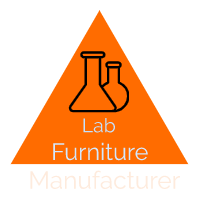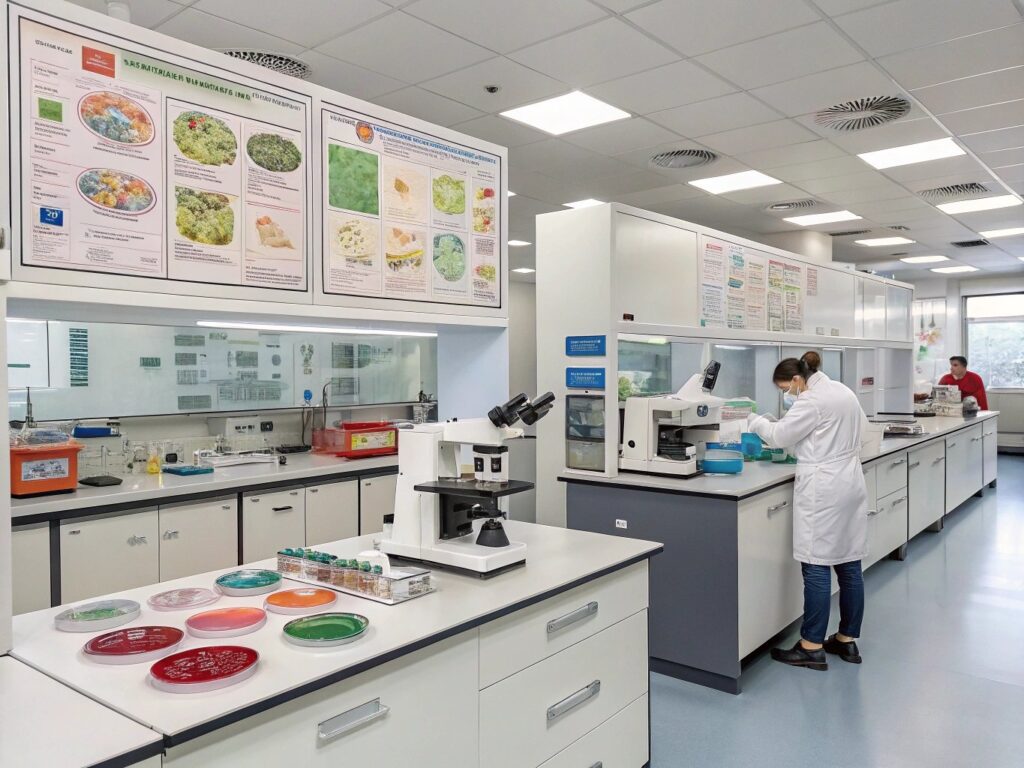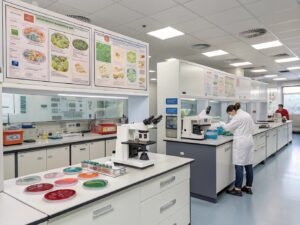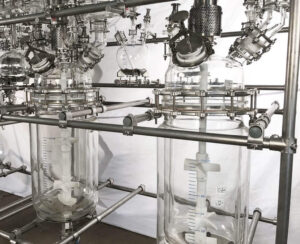Table of Contents
Designing a food microbiology laboratory requires careful planning to ensure accurate test results, maintain biosafety standards, and create an efficient workflow. Whether you’re establishing a new facility or upgrading an existing one, understanding the essential components and layout principles is crucial for successful food safety testing operations.
Essential Laboratory Zones and Their Functions
Sample Preparation Room
The preparation room serves as the foundation of your microbiology lab operations. This area handles media weighing, preparation, and storage, often housing precision balances and water purification systems. Depending on your workflow requirements and available space, this zone can be subdivided into specialized areas for different preparation tasks.
Sterilization Room
Proper sterilization is critical for preventing contamination in food microbiology testing. This dedicated area should accommodate both wet sterilization equipment (autoclaves) for media preparation and dry sterilization ovens for glassware. The sterilization room must be isolated from other areas with adequate exhaust ventilation to manage heat and steam.
Cleanroom Environment
The cleanroom represents the heart of your testing operations, where sample analysis and pre-processing occur. This controlled environment prevents external contamination that could compromise test results. For smaller operations, laminar flow hoods may serve as an alternative to full cleanroom construction, though high-volume testing facilities typically require dedicated cleanroom spaces.
Incubation Room
Temperature-controlled incubation is essential for microbial growth and identification. This room houses incubators at various temperatures, with water baths recommended for precise temperature control. For comprehensive food safety testing, separate areas for bacterial and fungal cultures are mandatory to prevent cross-contamination.
Waste Treatment Zone
Proper waste management protects both laboratory personnel and the environment. This area handles decontamination of processed samples, intermediate cultures, and hazardous biological waste according to regulatory requirements.
Washing and Storage Areas
Clean glassware storage and washing facilities support continuous laboratory operations. This zone includes cleaning, drying, and sterile storage of laboratory equipment.
Critical Design Principles for Laboratory Layout
Unidirectional Workflow
The most important principle in food microbiology lab design is establishing a unidirectional workflow that minimizes cross-contamination risks. Samples should flow logically from reception through testing to disposal without backtracking through clean areas.
An effective layout typically features a central preparation room adjacent to the cleanroom, incubation areas, and sterilization zones. The sample flow should progress systematically: cleanroom → incubation → pathogen identification → waste treatment.
Biosafety Considerations
Biosafety Cabinet (BSC) placement requires careful consideration. These units should be positioned in BSL-2 pathogen identification zones rather than general cleanroom areas to prevent sample contamination. Additionally, sterilization areas need clear separation between contaminated and non-contaminated materials.
Cleanroom Standards and Requirements
International Cleanliness Standards
For food microbiology laboratories, ISO 14644 Class 10,000 (equivalent to Class 7) cleanroom standards are recommended. This classification controls particles of 0.5μm and 5μm diameters, which is essential for biosafety laboratory operations.
BSL-2 facilities require negative pressure maintenance (minimum -5Pa) with HEPA filtration systems to protect both equipment and personnel from airborne contaminants.
Sterilization Systems
Effective sterilization involves multiple approaches:
UV Sterilization: UV lamps operating at 253.7nm wavelength provide surface sterilization, though they require external switches and only affect exposed surfaces.
Gas Fumigation: Systems using ozone or peracetic acid provide deep sterilization capabilities but require mandatory post-treatment ventilation to ensure personnel safety.
Quality Control and Maintenance
Regular Monitoring
Successful food microbiology laboratories implement quarterly monitoring for airborne and settling microorganisms. This ongoing assessment ensures your cleanroom maintains its specified cleanliness levels.
Annual Validation
Professional technical validation by certified agencies should occur annually to verify that all systems meet regulatory requirements and performance standards.
Implementation Best Practices
Contractor Selection
Choose experienced contractors with proven microbiology laboratory construction experience. Rigorous construction supervision ensures that design specifications translate into functional reality.
Future-Proofing Design
Modular designs allow for scalability as testing volumes increase or new pathogen testing requirements emerge. This flexibility protects your investment while accommodating evolving food safety regulations.
Regulatory Compliance
While specific cleanliness standards for food microbiology laboratories vary by region, adopting BSL-2 best practices ensures comprehensive safety and quality control. Stay current with local health department requirements and international food safety standards.
Common Design Mistakes to Avoid
Many laboratory design projects fail due to overly complex layouts that reduce usability and increase construction costs. Focus on functional simplicity that supports efficient workflows rather than impressive but impractical designs.
Inadequate separation between clean and contaminated areas represents another frequent error. Ensure clear physical and airflow barriers between different functional zones.
Conclusion
Designing an effective food microbiology laboratory requires balancing regulatory compliance, operational efficiency, and biosafety requirements. Success depends on logical zoning with unidirectional flow, strict cleanroom controls including proper sterilization and particulate monitoring, and operational discipline across all testing phases.
The investment in proper laboratory design pays dividends through accurate test results, regulatory compliance, and efficient operations that support food safety objectives. Whether you’re processing routine samples or investigating foodborne illness outbreaks, a well-designed facility provides the foundation for reliable microbiology testing.
Remember that laboratory design is not just about meeting current needs—it’s about creating a flexible, scalable facility that can adapt to evolving food safety challenges and regulatory requirements. With careful planning and attention to these design principles, your food microbiology laboratory will serve as a critical component in protecting public health through accurate, reliable testing.



